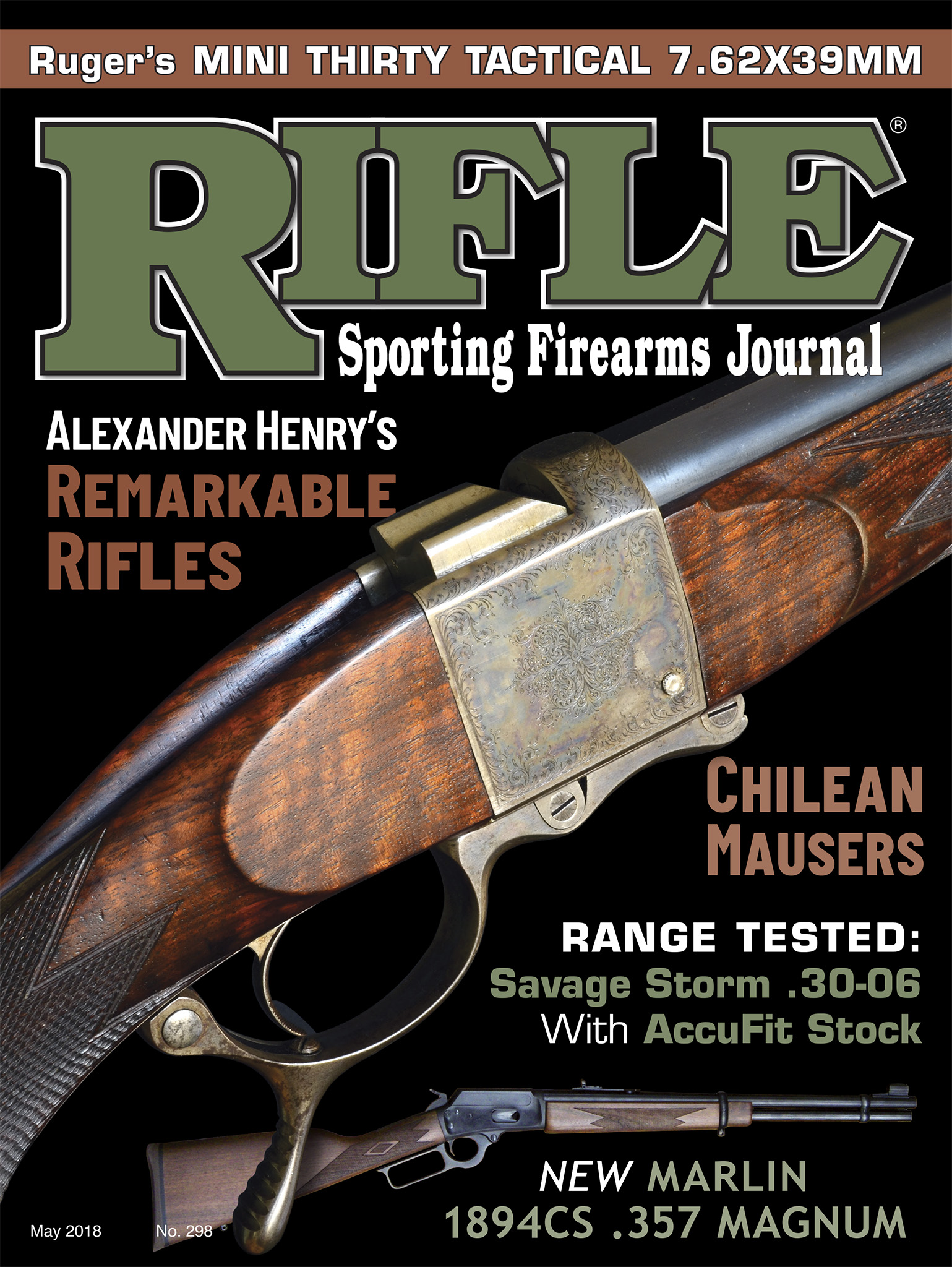A Rifleman's Optics
Reflex Sights
column By: John Haviland | May, 18
For some reason the open sights on my .22 rifle no longer “aim” quite as precisely as they did years ago. Some riflemen might say deteriorating eyesight is to blame, but I’ll never admit that. A red-dot sight mounted on a Ruger 10/22 rifle gets me back in the game, because such a sight removes the need to shift focus from a rear and front sight and out to the target. Instead, an illuminated red dot is projected to the eye in the same focal plane as the target, and I just have to place the dot on the target and gently pull the trigger.
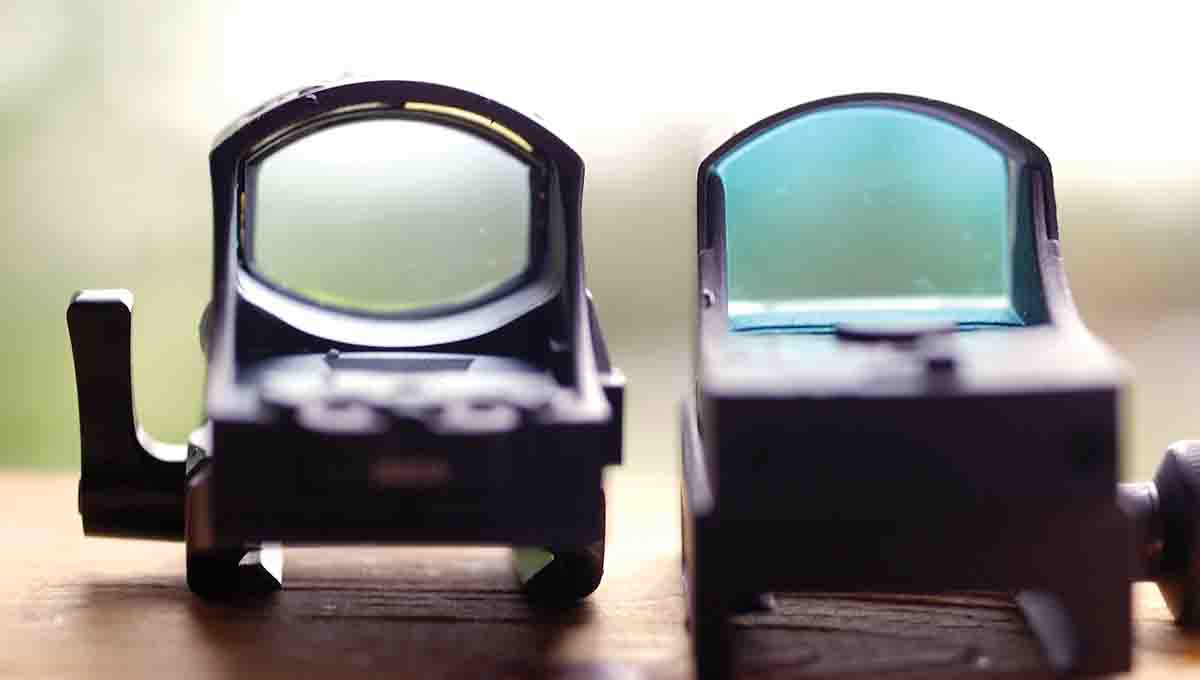
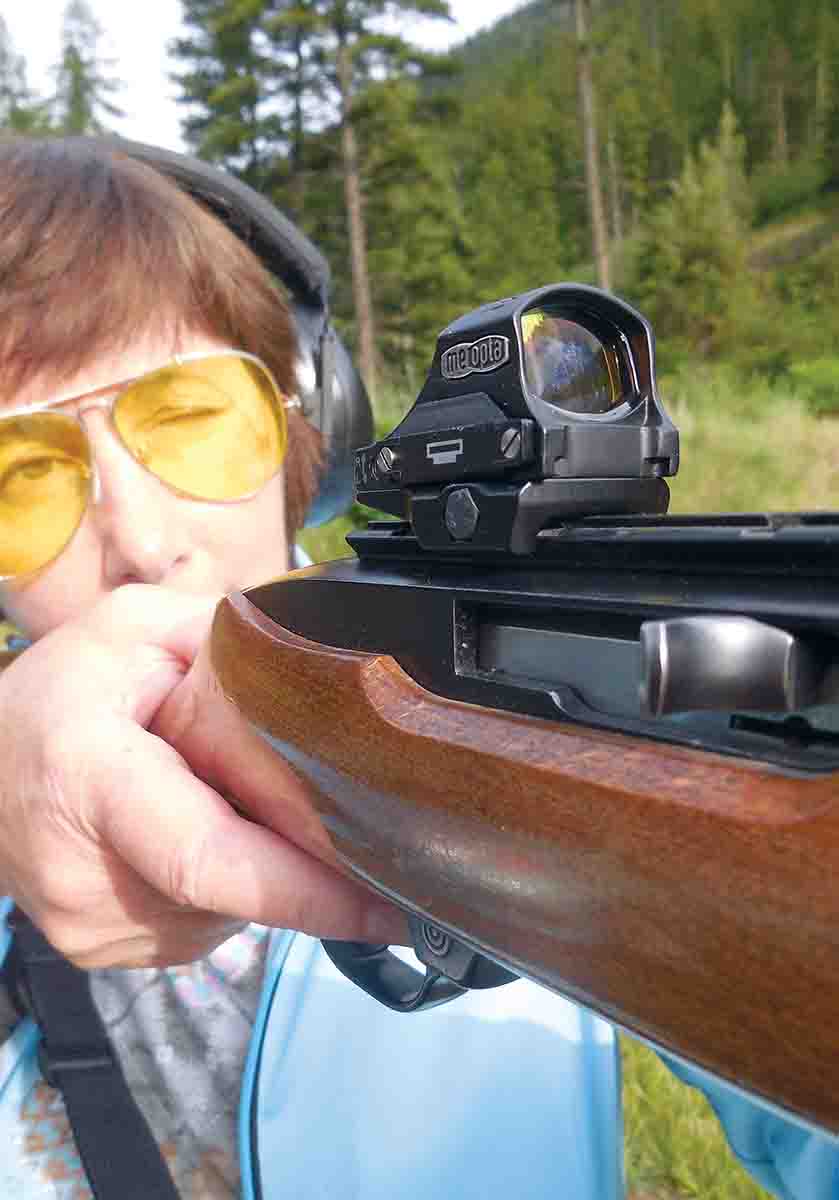
“Red dot” is a general term for sights with no magnification and an illuminated reticle. These include prismatic, holographic and reflex sights. A prismatic sight looks similar to a regular riflescope, only shorter because it has fewer lenses. Its reticle is etched on a lens, so it can be a dot or a pattern. These sights have a set span of eye relief, and extend fairly high from a rifle.
A holographic sight’s reticle is illuminated by a laser and can be about any shape, but usually is a small, minute-of-angle dot(s) surrounded by a large circle. The sight has unlimited eye relief and is more compact than a prismatic sight, yet is still relatively heavy and long for a trim rifle like the 10/22. For example, the EXPS3 is one of EOTech’s smaller holographic sights, yet it weighs 11.2 ounces with a height of 2.9 inches.
Reflex sights are just right for the Ruger 10/22, weighing only a few ounces with a height of only an inch or so. The “reflex sight” name comes from its aiming point that is projected forward from below and behind the objective lens and reflected off the back of the objective lens (which acts like a mirror) toward the eye. They have unlimited eye relief.
I carry my 10/22 mostly on hikes after grouse in the mountains, and a reflex sight fits neatly on the .22 for those steep walks. I tested two compact reflex sights on my 10/22, one a bargain-priced sight and a second, more expensive unit.
Meopta MeoRed
The MeoRed comes with a Docter mounting plate. I ordered a base that holds the sight and clamped it onto the Weaver-style base on my 10/22 with a tightening lever. A single CR2032 battery powers the sight. It’s installed by removing a cover at the bottom right side of the sight, slipping in the battery and replacing the cover. Battery life is 300 hours. A push on the button on the left side of the sight illuminates its 3 minute-of-angle (MOA) dot reticle at its middle intensity. Double tapping the button turns off the sight, and it automatically shuts off after three hours of sitting idle.
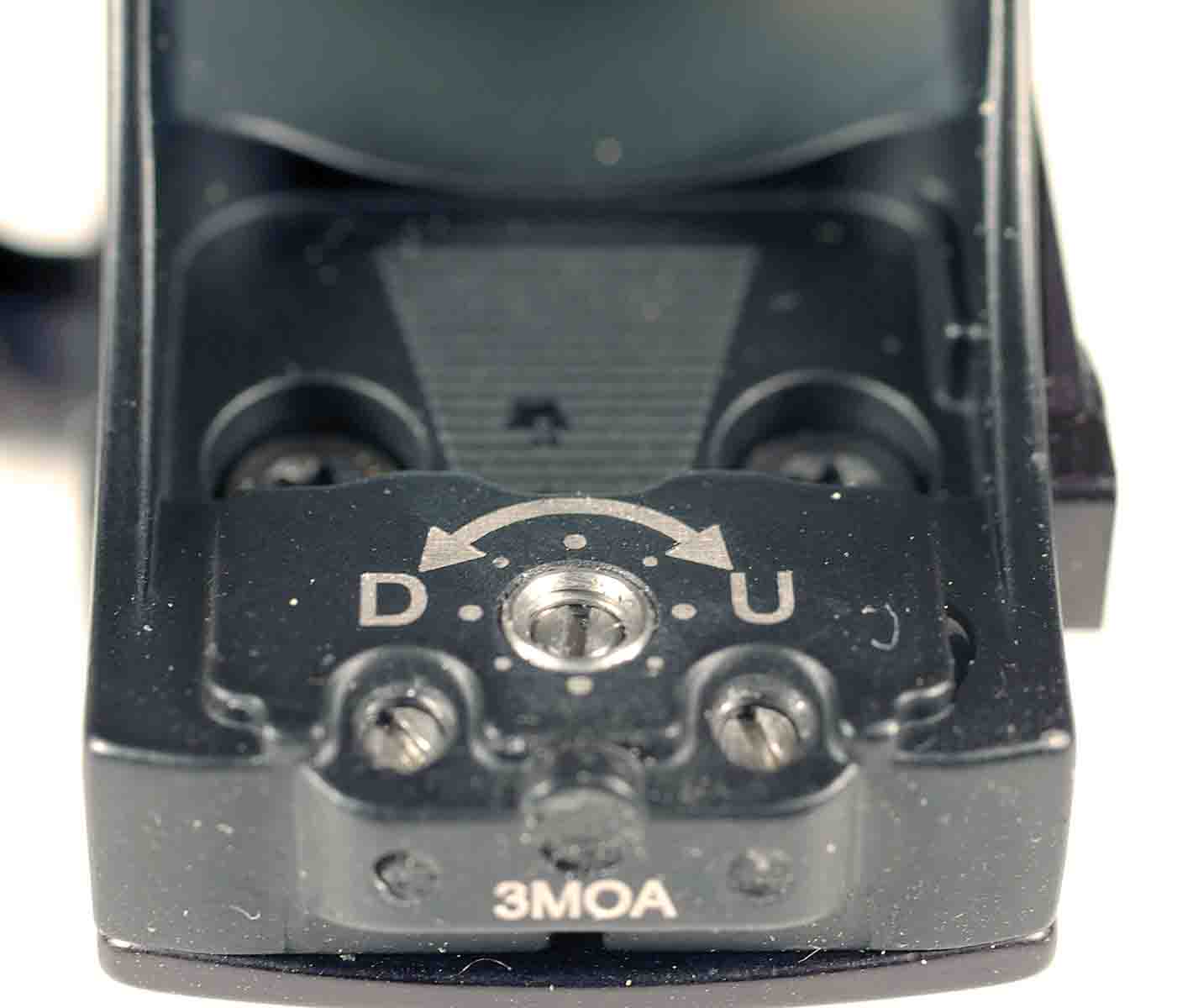
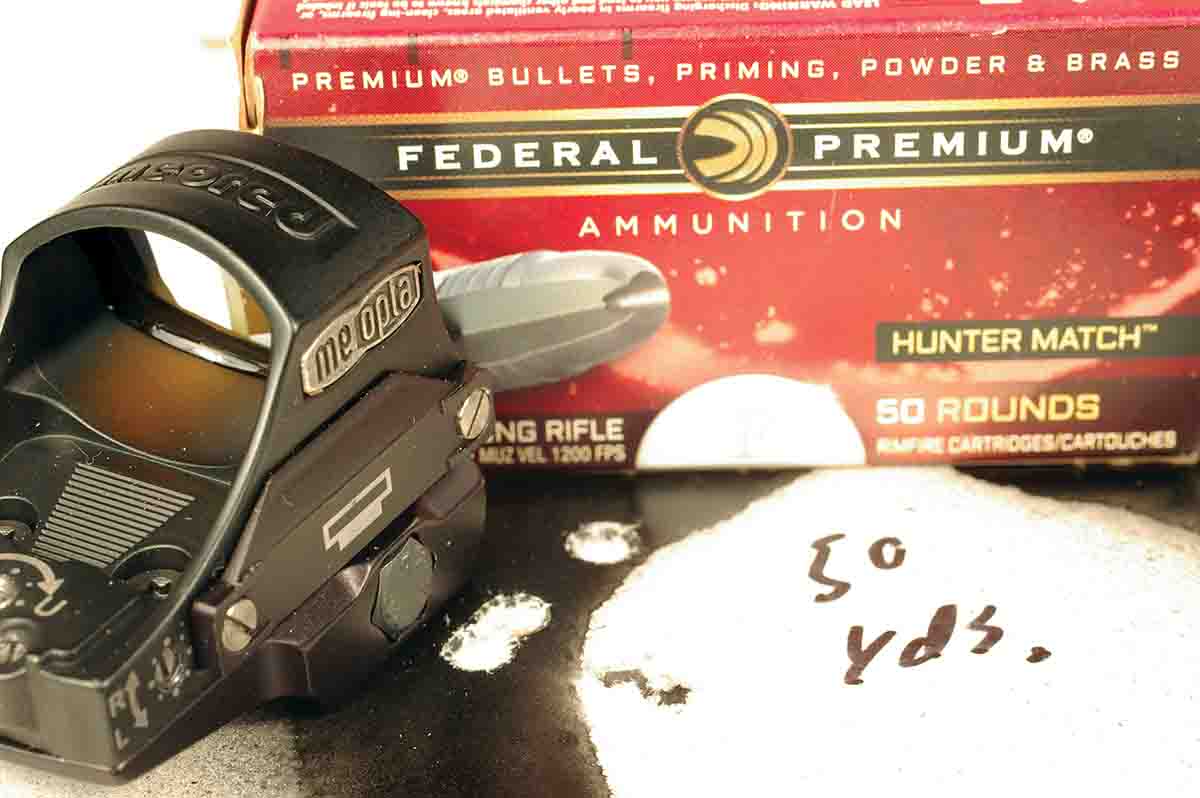
The sight is dialed in with elevation and windage “rectification” screws. No reference marks indicate how much adjustment a turn of a screw moves bullet impact. I put a LaserLyte Bore Sight rod into the rifle’s muzzle and adjusted the screws until the red dot lined up with the Bore Sight’s red dot. With some fine tuning when shooting at a target, the sight hit right on point of aim.
The MeoRed’s screen is .925-inch wide and .669-inch high. That seems narrow to quickly see its dot and pick up a target. With my cheek on the stock comb, however, my eye was right behind the screen and the dot was instantly visible. Meopta does not state the sight’s field of view, but with both eyes open I saw the dot and the whole world. The sight transmits 86 percent of light entering the screen.
To see if the MeoRed provided my eyes with a leg up over shooting the 10/22’s open sights, I first shot groups with the open sights, followed by the reflex sight. Aiming with open sights from a rest, I shot two five-shot groups that averaged .75 inch at 25 yards, and 1.55 inches at 50 yards. Not too bad. With the dot on its middle intensity, groups averaged .66 inch at 25 yards. Groups at 50 yards were a touch larger than the open sight groups. Turning the intensity down to a fine dot provided a more precise aim, and groups averaged .80 inch.
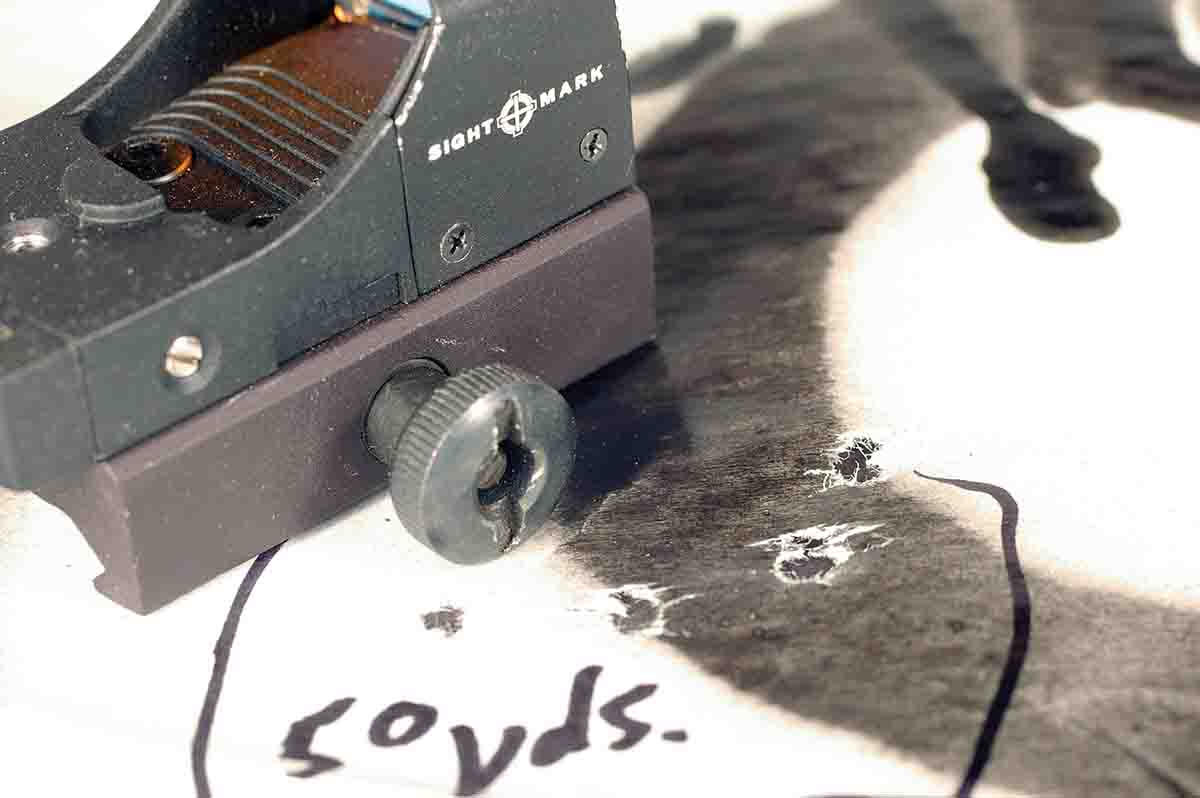
Meopta states its sight is parallax-free. I shifted my eye, and the dot, as far as possible to the sides, top and bottom of the screen and shot groups at 50 yards. Bullet impact point was the same with the dot at the sides and top of the screen as with the dot centered. But bullet impact shifted an inch lower with the dot in the bottom of the screen.
I knocked a golf ball around with the 10/22 like it was a remote driving iron. I tracked the rolling ball with the red dot and the moment it stopped I sent it flying again, and again. The MeoRed has a 10-year defect warranty and retails for about $500.
Sightmark Mini Shot
The Mini Shot is a basic reflex sight with an aluminum frame that is 2 inches long, one inch wide and 1.4 inches high. Pushing an on/off switch at the top rear of the sight, one click turns on a 3-MOA red dot to low intensity, and a second click increases dot brightness to “high.” The sight comes standard with a weaver rail mount that tightens with a dime. Other mounts are available.
Two screws detach the Mini Shot from the base to install a CR2032 battery. Battery life is 1,000 hours on the low brightness setting, and 300 hours on high. Still, it is prudent to turn off the sight before installing its protective cover.
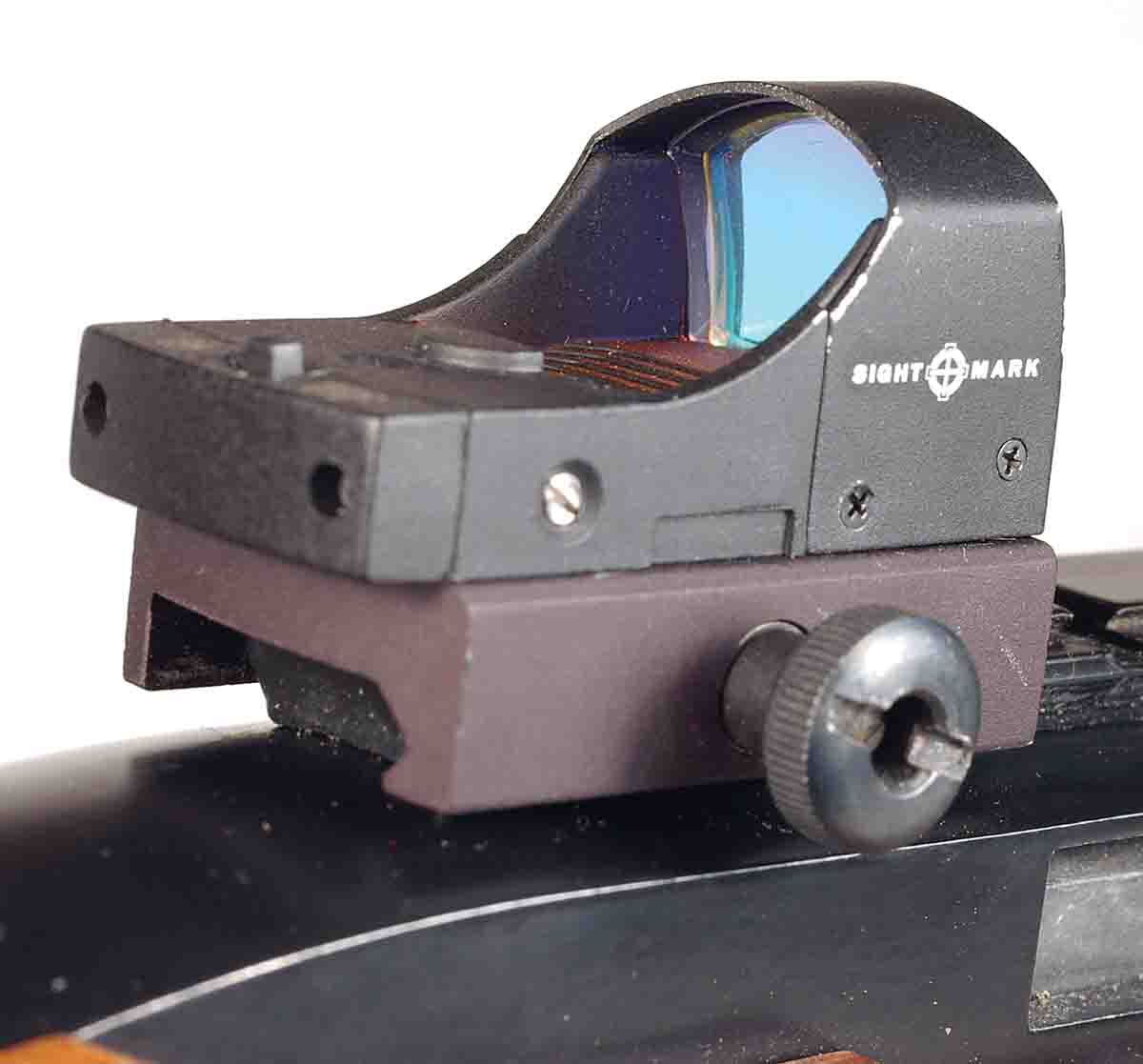
Screen size is .90-inch wide by .63-inch high. Field of view is 51.5 feet at 100 yards. Light transmission is not listed for the Mini Shot. The view through the sight showed a definite blue tint and was dimmer than the MeoRed.
Still, with the Mini Shot clamped on, the 10/22 shot groups that averaged .47 inch at 25 yards and 1.33 inches at 50 yards, and that was with the low brightness setting. Bullet impact remained the same with the dot shifted to each corner of the screen.
The Mini Shot’s dot tracked a golf ball, and I rolled it clear out of sight pulling the .22’s trigger. The Mini Shot has a limited lifetime warranty and retails for about $60. Now to transition from golf balls to grouse.


